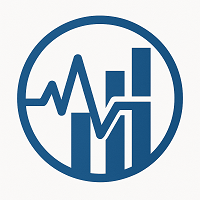Flowserve-Chart Merger: A $19 Billion Play for Industrial Tech Supremacy
The merger of
(FWR) and Chart Industries (GTLS) into a $19 billion industrial powerhouse is more than a consolidation—it's a strategic masterstroke to dominate the next era of process technology. By combining Flowserve's flow management expertise with Chart's cryogenic and compression prowess, the merged entity is poised to lead in high-growth sectors like clean energy, LNG, and data centers. Let's dissect why this deal could be a once-in-a-decade opportunity for investors.
The Strategic Synergy Playbook
The deal's genius lies in its complementary strengths. Flowserve's 5.5 million installed assets and $3.7 billion in recurring aftermarket revenue provide a stable cash flow base, while Chart's leading role in LNG and hydrogen infrastructure opens high-margin growth avenues. Here's how the pieces fit:
Unified Technology Stack: The combined entity will offer end-to-end solutions—from design to predictive maintenance—driven by shared digital platforms. This integration could cut customer costs by 15-20%, creating a defensible moat against rivals.
Market Diversification: With 42% of revenue from predictable aftermarket services, the merged firm reduces cyclicality. Key markets include:
- Carbon capture and storage (growing at 12% CAGR)
- Liquid natural gas (LNG) (Chart's 9% revenue share now leveraged across Flowserve's global footprint)
Data center cooling (a $15 billion opportunity by 2027)
R&D and Scale: The merged R&D budget ($200M+ annually) can accelerate innovation in areas like AI-driven predictive maintenance and low-emission cryogenic systems. Cross-selling opportunities alone could add 2% to revenue growth annually.
The Financial Case: Synergies, Cash, and Value
The numbers scream accretive upside:
- Cost Synergies: $300M in annual savings within three years (via procurement, operational efficiencies, and reduced corporate overhead).
- EPS Accretion: The deal is expected to boost Adjusted EPS in Year 1 post-closing, with a 2.0x net debt/EBITDA ratio leaving room for dividends and buybacks.
- Cash Flow Machine: $1.8B in trailing twelve-month cash flow supports a balanced capital allocation strategy—reinvesting in growth while returning 40% of free cash flow to shareholders.
Why the dip is a buying signal: Shares fell pre-announcement as investors feared dilution of Chart's LNG focus. But with LNG now a core part of the merged entity's portfolio and the combined firm's diversified revenue streams, this is a short-term overreaction.
Valuation: A Discounted Powerhouse?
At a combined enterprise value of $19B, the merged entity trades at 8.5x EV/EBITDA (vs. peers like Emerson Electric at 12x). Post-synergy EBITDA of $2.3B+ would push the multiple closer to 7.5x, implying 20% upside.
Risks? Yes—but Manageable
- Regulatory Hurdles: Antitrust scrutiny is low given their complementary portfolios. Closing by Q4 2025 is achievable.
- Integration Challenges: Leadership (Scott Rowe + Jill Evanko) has a proven track record. Maintaining operational hubs in Atlanta, Houston, and Dallas minimizes disruption.
Investment Thesis: Buy the Dip, Hold for the Surge
The merger's 53.5%/46.5% equity split ensures Chart shareholders gain control, aligning incentives to execute synergies swiftly. With shares down 5% pre-announcement, this is a buy signal for investors.
Entry Point: Target a 6-12 month horizon. The stock could re-rate once synergies materialize by early 2026.
Final Verdict
Flowserve-Chart is not just a merger—it's a strategic reimagining of industrial process technology. With a fortress balance sheet, recurring revenue streams, and a clear path to 10%+ annual growth, this deal offers a rare chance to own a future leader in the $2T global industrial tech market. Act now before the re-rating begins.
Disclosure: This analysis is for informational purposes only. Consult your financial advisor before making investment decisions.

Comments
No comments yet